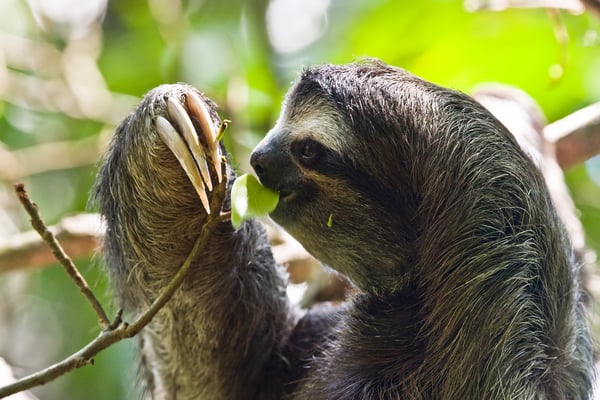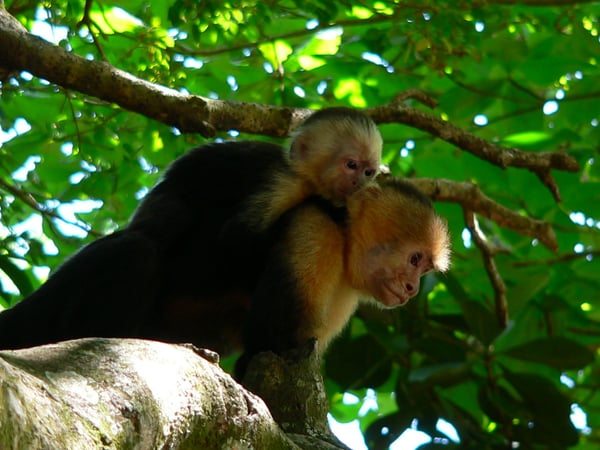Where to See Baby Sloths in Guanacaste
The sloth is one of Costa Rica’s most iconic creatures, drawing love from around the world for its peaceful nature and friendly appearance. In fact, the sloth is the slowest land mammal in the world, posting a record top speed of 5 feet per minute across the ground, a speed that triples in the trees up to speeds of nearly 16 feet per minute.
However, despite their slow moving nature, sloths have excellent camouflage when in their natural rainforest habitats, making spotting these creatures difficult to the untrained eye.
Today we take a look at where in Costa Rica to find sloths and some of the best ways to spot them, knowledge that is especially valuable over the green season, which is the best time to make an even more prized sighting: baby sloths.

The Time to See Baby Sloths
In Costa Rica, sloth mating season typically takes place between September and November, which coincides with baby sloths separating from their mothers and setting out into the wild for the first time. After a sloth is born, they live with their mothers for a few months as they learn to survive and find food, before eventually setting out on their own as mating season begins again.
What this means is that late green season is the best chance to spot these young sloths, both as they are preparing to leave and just as they have set out on their own.

Where to See Sloths in the Wild
Sloths can be seen in the wild all across the country, and can notably be seen in Monteverde, La Fortuna National Park, Carara and Manuel Antonio National Parks, Corcovado National Park, as well as along the Caribbean slope in Costa Rica and the humid mountain paths in the Guanacaste Volcanic Mountain Range.
From Guanacaste, the nearest location to see sloths in their natural habitat is in Tenorio Volcano National Park a few hours away. Monteverde and Carara National Park are also within a day’s trip from Las Catalinas, or make for an interesting weekend trip deeper inland.
Once there, hire a local guide for the best chance to sight a sloth. As part of their normal habitat, sloths live up on the tops of the trees, and camouflage themselves well to look like clumps of vines or leaf litter. A well trained guide will have a scope, as well as valuable local knowledge. Information like which trees sloths prefer, where they tend to congregate, and their usual active hours will all improve chances at a spotting.
For a day trip or a longer weekend to spot a sloth, Beach Town Travel agents lodging options in these areas and can help you reserve a guide and transportation.
Alternative Wildlife in The Area
Closer to Guanacaste, there are a number of opportunities to see the regions’ many monkeys up close and personal. The two species that make the region their home are white-faced capuchin monkeys (above), and howler monkeys (seen below). Both species are right at home in the tropical dry forests of Guanacaste, move through a wide range of areas, can be spotted easily, heard even more easily, and are mobile and active throughout the year.
In fact, both of these photos were taken right in Las Catalinas, so when wandering along the beach, hiking through the dry forest, or even sitting on a porch, you may spot a family just by looking up.




